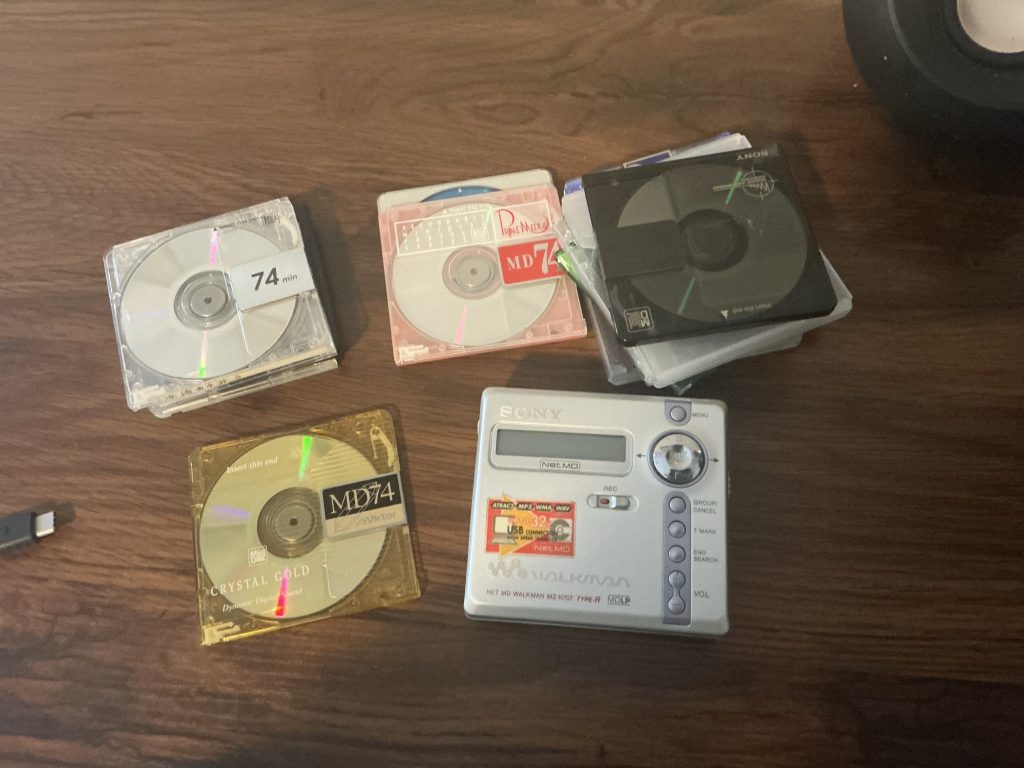In my continued adoption of MiniDisc, I’ve done been experimenting with my N707‘s record function. Dealing with analog sources, it works about the same as I remember cassettes without a deck.
The interesting thing of course is the optical support. Synchro-recording doesn’t really shine without using a mini-TOSLINK connection and S/PDIF for input. I’ve also figured out that, amusing to me, using a USB-C to TOSLINK dongle on my MacBook is far more consistent than using my desktop’s optical port when it comes to controlling the LED. But in the end, I’d say that incorporating intentional silences into the playlist is ideal, at least if you care about track marks.
One of the things that I’ve found rather nice about MD as a format is it combines everything useful about CD in a more compact form, and it avoids the problem of self-contained devices. In the later case, while devices like my Rockbox’ified iPod and H2 offer greater storage capacity, they also have their own sufferings.
In the iPod’s case, it’s simply slow as fuck. Likewise, the SD adapter board inside couldn’t handle 128 GB cards, so it’s rocking a 64. The H2 can easily swap cards, if you account for the firmware and system data being stored on them, but that’s a pain and MicroSD is tiny-as-fuck. Contrasting of course to less purpose built devices, where the storage tends to be both fixed and having to share with all the other data on tablets, phones, etc.
The funny thing of sorts, is I’ve never really minded physical media–so much as I’ve tended to be network centric. My main issue with physical media has usually been the storage requirements, and MDs are nice and compact!
